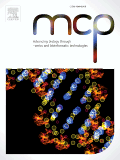
“Pediatric low-grade gliomas (P-LGG) consist of a mixed group of brain tumors that correspond to the majority of CNS tumors in children.
Notably, they may exhibit spontaneous involution after subtotal surgical removal (STR). In this study, we investigated molecular indicators of spontaneous involution in P-LGG.
CONCLUSIONS:
The P-LGG, which remained stable or that presented spontaneous involution after STR, showed significantly higher CNR1 expression at the time of diagnosis.
We hypothesize that high expression levels of CNR1 provide tumor susceptibility to the antitumor effects of circulating endocannabinoids like anandamide, resulting in tumor involution.
This corroborates with reports suggesting that CNR1 agonists and activators of the endocannabinoid system may represent therapeutic opportunities for children with LGG.
We also suggest that CNR1 may be a prognostic marker for P-LGG.
This is the first time spontaneous involution of P-LGG has been suggested to be induced by endocannabinoids.”
http://www.ncbi.nlm.nih.gov/pubmed/27613640
 “Both environmental and genetic factors are known to contribute to the development of anorexia nervosa (AN), but the exact etiology remains poorly understood.
“Both environmental and genetic factors are known to contribute to the development of anorexia nervosa (AN), but the exact etiology remains poorly understood.

 “Previous studies have shown that a cytosine (C) to thymine (T) single nucleotide polymorphism (SNP) of the human cannabinoid receptor 1 (CNR1) gene is associated with positive emotional processing.
“Previous studies have shown that a cytosine (C) to thymine (T) single nucleotide polymorphism (SNP) of the human cannabinoid receptor 1 (CNR1) gene is associated with positive emotional processing.





